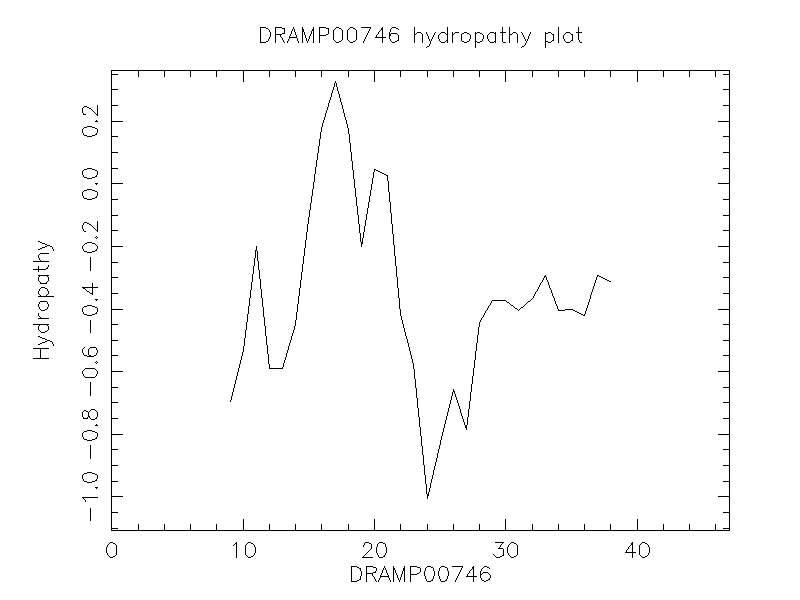General Information
-
DRAMP ID
- DRAMP00746
-
Peptide Name
- Flower-specific defensin (NaD1; Plant defensin)
-
Source
- Nicotiana alata (Winged tobacco) (Persian tobacco)
-
Family
- Belongs to the DEFL family
-
Gene
- D1
-
Sequence
- RECKTESNTFPGICITKPPCRKACISEKFTDGHCSKILRRCLCTKPC
-
Sequence Length
- 47
-
UniProt Entry
- Q8GTM0
-
Protein Existence
- Protein level
Activity Information
-
Biological Activity
- Antimicrobial, Antibacterial, Anti-Gram+, Anti-Gram-, Antifungal
-
Target Organism
-
- Fungi: Fusarium oxysporum f. sp. Vasinfectum (IC50=1 µM), Thielaviopsis basicola (IC50=0.80 µM), Verticillium dahliae (IC50=0.75 µM), Leptosphaeria maculans (IC50=0.80 µM), Aspergillus nidulans (IC50=0.80 µM), Candida albicans (IC50>10 µM), Pichia pastoris (IC50>10 µM), Saccharomyces cerevisiae (IC50>10 µM).
- Gram-negative bacteria: Escherichia coli (IC50>10 µM), Pseudomonas aeruginosa (IC50>10 µM);
- Gram-positive bacteria: Staphylococcus aureus (IC50>10 µM), Bacillus cereus (IC50>10 µM).
- HeLa cells (IC50>10 µM).
-
Hemolytic Activity
-
- No hemolysis information or data found in the reference(s) presented in this entry
-
Cytotoxicity
-
- Not included yet
-
Binding Target
- Not found
Structure Information
-
Linear/Cyclic
- Not included yet
-
N-terminal Modification
- Not included yet
-
C-terminal Modification
- Not included yet
-
Nonterminal Modifications and Unusual Amino Acids
- Not included yet
-
Stereochemistry
- Not included yet
-
Structure
- Combine helix and strand structure
-
Structure Description
- NaD1 adopts the cysteine-stabilized αβ (CSαβ) motif formed by a triple-stranded antiparallel β-sheet and a single α-helix that is tethered to the sheet via three disulfide bonds. The fourth disulfide bond reinforces the N- and C-terminal regions of the molecule.
-
Helical Wheel Diagram
- 4AAZ->
-
Predicted Structure
- There is no predicted structure for DRAMP00746.
Physicochemical Information
-
Formula
- C223H374N68O65S8
Absent Amino Acids
- MQVWY
Common Amino Acids
- C
Mass
- 5304.32
PI
- 9.08
Basic Residues
- 11
Acidic Residues
- 4
Hydrophobic Residues
- 9
Net Charge
- +7
-
Boman Index
- -107.07
Hydrophobicity
- -0.472
Aliphatic Index
- 51.91
Half Life
-
- Mammalian:1 hour
- Yeast:2 min
- E.coli:2 min
Extinction Coefficient Cystines
- 500
Absorbance 280nm
- 10.87
Polar Residues
- 19
DRAMP00746

Comments Information
Function
- NaD1 is a member of a family of cationic peptides that displays growth inhibitory activity against several filamentous fungi, including Fusarium oxysporum.
PTM
- Contains four disulfide bonds 3-47; 14-34; 20-41; 24-43.
Tissue specificity
- Most abundant in the epidermal cell layers of the petals and sepals, within the connective cells of the anthers, and the cortical cells of the style. Not detected in the tapetum, pollen mother cells, the transmitting tissue, the vascular bundles of the anther and style or in leaves. Expressed also in ovaries, but barley detectable in roots.
Biophysicochemical properties
- pH dependence (Stable under extremes of pH); Temperature dependence (Stable under extremes of temperature.
Literature Information
- ·Literature 1
-
Title
- Isolation and properties of floral defensins from ornamental tobacco and petunia.
-
Pubmed ID
- 12644678
-
Reference
- Plant Physiol. 2003 Mar;131(3):1283-1293.
-
Author
- Lay FT, Brugliera F, Anderson MA.
- ·Literature 2
-
Title
- The three-dimensional solution structure of NaD1, a new floral defensin from Nicotiana alata and its application to a homology model of the crop defense protein alfAFP.
-
Pubmed ID
- 12473460
-
Reference
- J Mol Biol. 2003 Jan 3;325(1):175-188.
-
Author
- Lay FT, Schirra HJ, Scanlon MJ, Anderson MA, Craik DJ.
- ·Literature 3
-
Title
- Dimerization of plant defensin NaD1 enhances its antifungal activity.
-
Pubmed ID
- 22511788
-
Reference
- J Biol Chem. 2012 Jun 8;287(24):19961-72.
-
Author
- Lay FT, Mills GD, Poon IK, Cowieson NP, Kirby N, Baxter AA, van der Weerden NL, Dogovski C, Perugini MA, Anderson MA, Kvansakul M, Hulett MD.
- ·Literature 4
-
Title
- The plant defensin, NaD1, enters the cytoplasm of Fusarium oxysporum hyphae.
-
Pubmed ID
- 18339623
-
Reference
- J Biol Chem. 2008 May 23;283(21):14445-52.
-
Author
- van der Weerden NL, Lay FT, Anderson MA.

